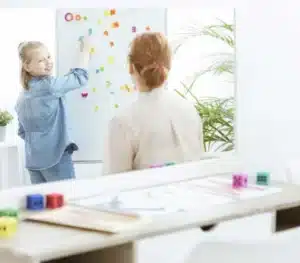By: Christine Hemelians, MS, OTR/L
Adults often use calendars, post-its, “to do” lists, and organizers to help complete tasks and enhance memory. Children as young as 12 months can also benefit from similar tools and reminders. When a child doesn’t understand what he/she is expected of them or what they’re supposed to do, and an adult expects to see an action, this often results in challenging behaviors which may include: crying, tantrums, or aggressive behaviors. A visual schedule can help to communicate expectations to young children and avoid challenging behaviors. This is most beneficial for children that have auditory processing issues, or delays in receptive language skills, because unlike verbal instruction, a visual provides the child with a symbol that helps the child to see and understand words, ideas, and expectations.
Visual schedules and prompts can:
- Be used with all levels and abilities
- Be consistent
- Reduce worries/ anxiety by offering a constant direction
- Allow time for language processing
- Offer a visual image and written word to meet the needs of a variety of student’s abilities
- Offer a sense of predictability and help your child know “what’s next”
- Assist with transitions
- Provide order to assist with impulse control
- Be flexible
- Be used in different settings and are transferable
Here’s an example of a simple visual prompt for toothbrushing. This outlines the appropriate steps to brush teeth in the correct order, as well as provides a concrete beginning and end to the activity.
Here’s another visual schedule/ chart, that I like to recommend to families in order to outline daily chores, activities, and routines for morning and night. This chart provides the opportunity for families to customize charts according to their daily and weekly routine. Here’s a link of the recommended visual schedule. https://a.co/d/7VPsoz9





